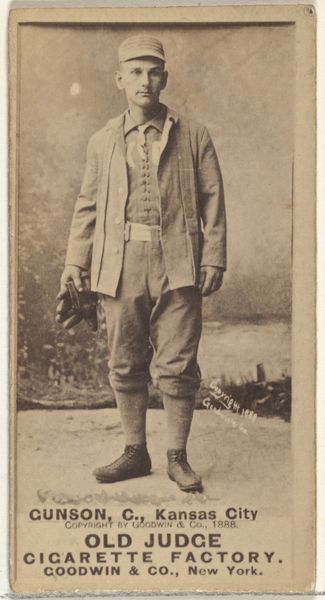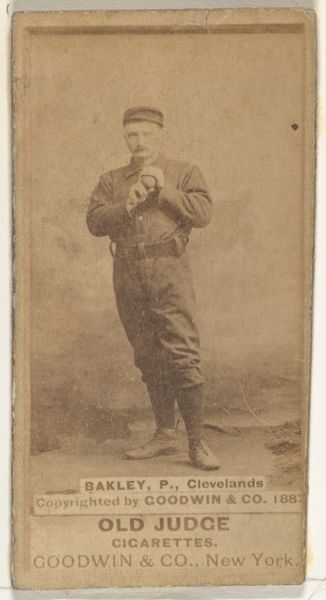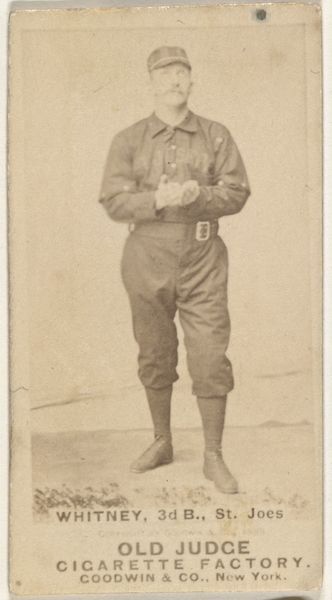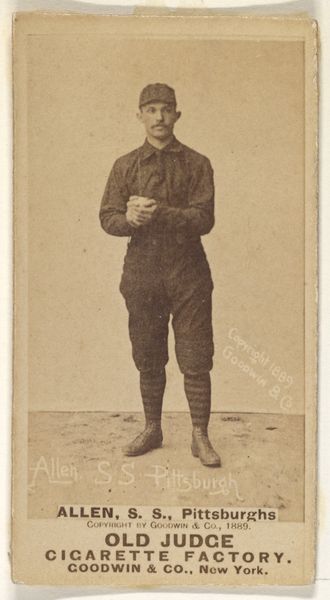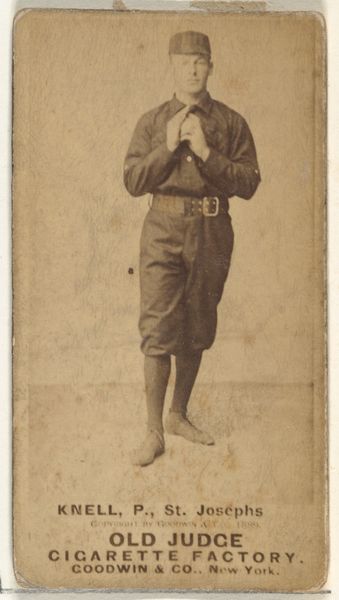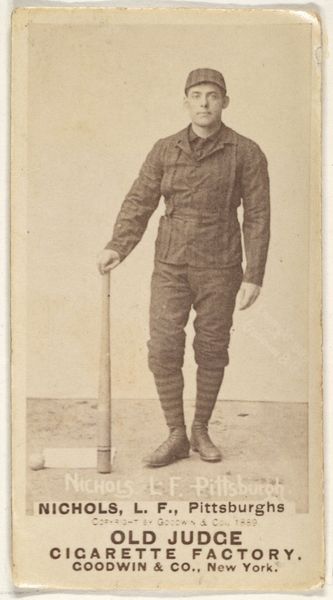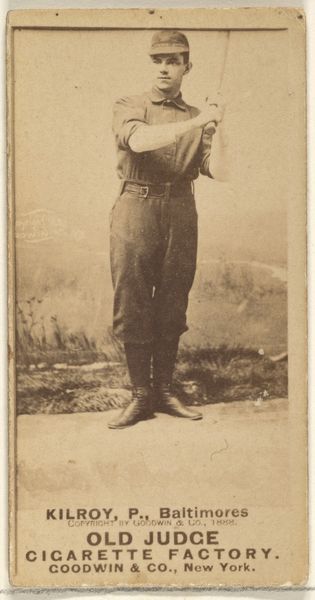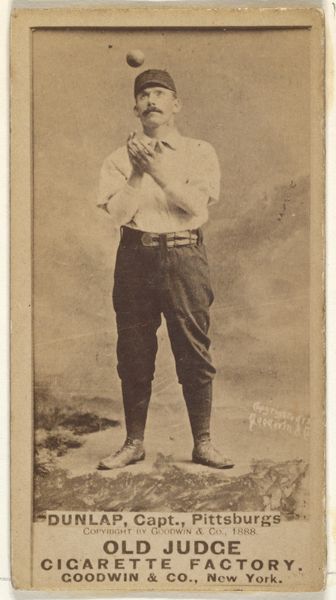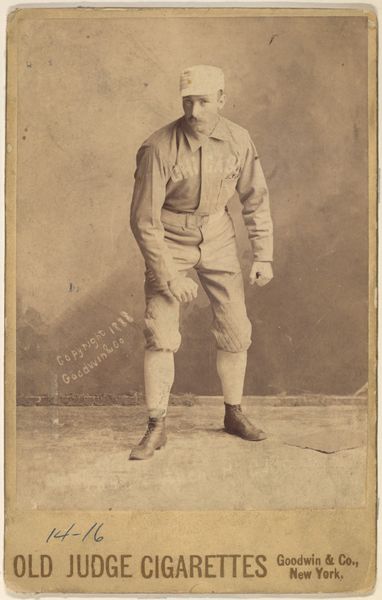
Fred C. Dunlap, Captain, Pittsburgh, from the series Old Judge Cigarettes 1888
0:00
0:00
drawing, print, photography, albumen-print
#
portrait
#
drawing
# print
#
film poster
#
photography
#
historical photography
#
19th century
#
men
#
albumen-print
#
realism
Dimensions: sheet: 6 1/2 x 4 3/8 in. (16.5 x 11.1 cm)
Copyright: Public Domain
Curator: This is "Fred C. Dunlap, Captain, Pittsburgh," a photograph dating back to 1888, produced by Goodwin & Company. It’s an albumen print, part of the “Old Judge Cigarettes” series, now residing at the Metropolitan Museum of Art. Editor: There’s something undeniably striking about this image, despite its age. The sepia tones give it a real sense of historical distance. He seems to be averting his gaze. Curator: Right, albumen prints were extremely popular then for their sharp detail and tonal range. Goodwin & Company utilized them commercially, inserting these photos into cigarette packs. Dunlap, a renowned baseball player, became a brand ambassador, a very early form of celebrity endorsement. Editor: So, this image served a specific function – promoting a product, creating a link between athleticism and smoking. Considering the societal implications, it prompts questions about the ethics of promoting harmful substances. Also, what did it mean to have predominantly white male figures displayed on such collectible items? Curator: Exactly. Advertising campaigns like this solidified particular narratives. We can ask how racial representation played out in the imagery and the commercial activities of the late 19th century, examining the reinforcement of a dominant cultural paradigm. Editor: This is more than just a portrait of a baseball player; it’s a layered historical document. We have photography's rise, burgeoning consumer culture, and sports figures gaining prominence, alongside questions of corporate responsibility. I am so conflicted because this feels almost invasive as it exploits his image as propaganda, really. Curator: Right, viewing these portraits within their economic context and commercial exploitation expands our understanding. We examine visual culture as deeply intertwined with structures of power and marketing strategies that shape our own understandings of health and beauty. Editor: Thanks for walking me through that; I found a lot more meaning there than I first imagined. Curator: My pleasure, considering these artworks through their institutional history is key.
Comments
No comments
Be the first to comment and join the conversation on the ultimate creative platform.
